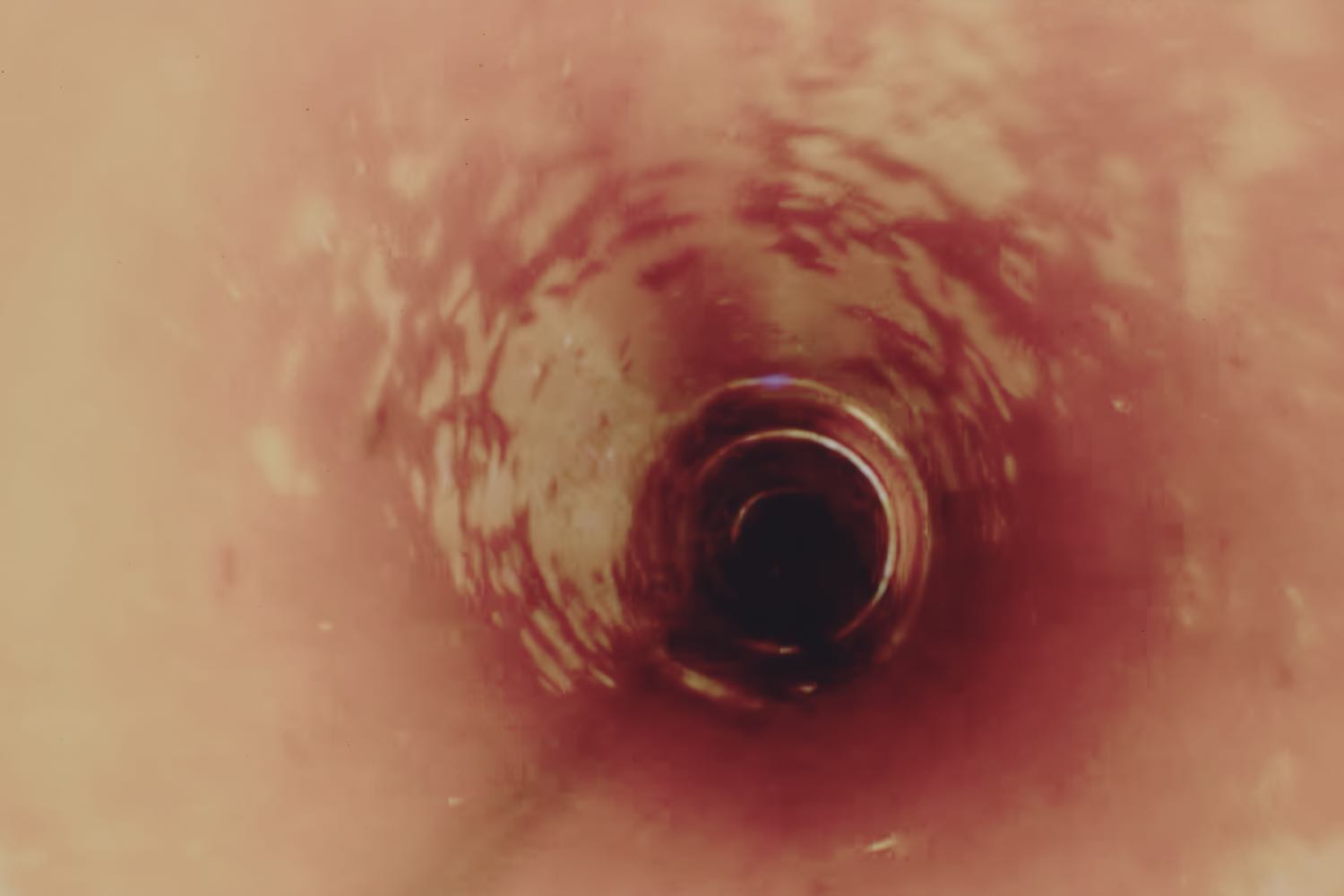Julie Mehretu has been lauded as one of the most important contemporary artists of our time. The New York Times described her as “one of today’s most interesting and thought-provoking painters” — a quote prominently featured in the marketing for her current exhibition at the MCA in Sydney. Titled “A Transcore of the Radical Imaginatory,” it is an ambitious offering from the Ethiopian-born, US-based artist, made predominantly of large-scale abstract works intermingled with a smaller selection of earlier works on paper.
The exhibition, her first major survey in Australia, has been described by Mehretu and curator and MCA director Suzanne Cotter not as a retrospective but rather as a selection of the artist’s work predominantly from 2017 to the present, with the exception of some earlier works tracing the artist’s development. This time period encompasses significant milestones in Mehretu’s career, punctuated by high-profile commissions for BMW, SFMOMA, and the Obama Presidential Center alongside tumultuous global and economic events such as the Trump and Biden presidencies, the COVID-19 pandemic, and the Black Lives Matter social justice movement.
Indexical mark making and abstraction are the key tenets of Mehretu’s practice, which is known for gestural, free-form style and explosive use of paint, ink, and color. Her works often feature a multitude of references, nodding to the culture of sampling and remixing that is endemic to the post-postmodern, post-pandemic, post-internet times that we live in. Economic trade routes, Calder sculptures, Japanese manga, Rembrandt etchings, maps of the Jewish diaspora, and brush-strokes from Lichtenstein paintings all find their way into her canvases. This layered approach, described in The Cut as “an amalgamation of experiences, viewpoints, and memories across epochs and continents,” can also be seen as a disparate set of cultural signifiers slotted, sometimes heavy-handedly, into a single artwork.
Mehretu’s highly technical artistic process is of note, as, for example, in the “Stages of Uprising” series (2024). Each of these works, made at the Gemini G.E.L. printmaking studios in Los Angeles, boast forty to sixty colors applied with as many as twenty-four copper printing plates. The effect is visually striking, like a sort of airbrushed Guernica, although the sheer density of color applied to a single work can sometimes feel unintuitive. Adjacent to these works hangs a series of Mehretu’s earlier works on paper, such as Untitled 2005 Drawings (2005), Migration Direction Map (1996), and Character Migration Analysis Index (1997). The soft subtlety of these beautifully framed earlier works are a welcome antidote to the more bold and brazen canvases that hang opposite.
Another favored abstraction technique of Mehretu is the incorporation of found images from news media, as seen in Hineni II (E. 3:4) (2019). This piece is built upon a digitally manipulated image from a California wildfire, particularly topical in both the current news media cycle and to Australian audiences, where seasonal bushfires have caused widespread destruction. Mehretu overlays and distorts this imagery with brush marks, ink drawing, and layers of screen printing. The impact is a kind of raw, intangible, ghostly feeling: the embers of a decaying empire.
A quiet highlight of the show is Mehretu’s “Feminine in Nine” series (2022–23), first exhibited at White Cube in London. Skillfully hung and curated by Cotter, these nine monumental works are reunited toward the back of the exhibition and presented reverentially, like a New Age Rothko Chapel.
The design of the exhibition is another triumph, with the MCA enlisting local architecture firm Neeson Murcutt Neille for assistance. This is a thoughtful initiative that more institutions could adopt. It fits well with the sometimes deceptively geometric and architectural style of Mehretu’s work; for an abstract artist, her process is surprisingly methodical. The celebration of architectural form is most notable in the decidedly sculptural “TRANSpaintings” series (2023–24). Seven paintings are presented in upright metal brackets designed by artist and collaborator Nairy Baghramian. It is an innovative approach to painting; the works are created using ink and acrylic paint on a monofilament polyester mesh, with the result being a complex and multilayered piece that seems to glow from within. The resulting interplay of space, light, and shadow is a full-body experience for the viewer, interrogating what it means to create a painting and what it means to be a spectator viewing one. This could be seen as the ultimate question of Mehretu’s practice. The success of her work is that, at her core, she is a painter’s painter.









